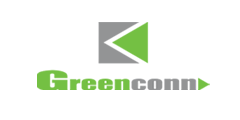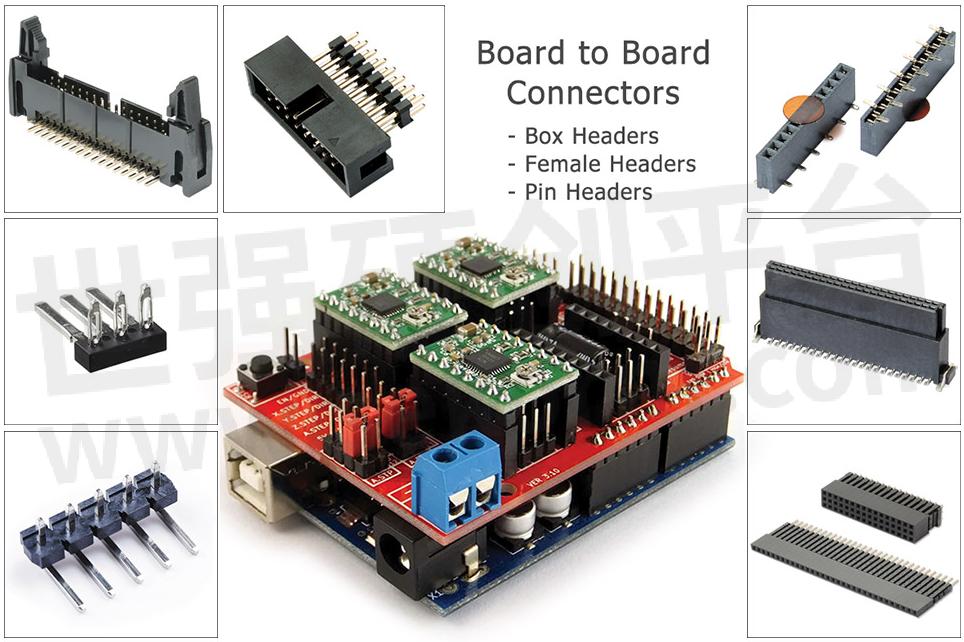Classification and Characteristics of Board-to-Board Connectors

A board-to-board connector refers to a type of connector product that connects different circuit boards together. It is currently the most powerful connector product in terms of transmission capacity among all types of connector products, and is mainly used in industries such as power systems, communication networks, financial manufacturing, elevators, industrial automation, medical equipment, office equipment, home appliances, and military manufacturing. Currently, the main pitch of board-to-board connectors includes 0.50mm, 0.60mm, 0.80mm, 1.00mm, 1.25mm, 1.50mm, 2.00mm, 2.50mm, 2.54mm, and 3.96mm.

Classification and characteristics of board-to-board connectors
Board-to-board connectors are classified according to different connection methods between circuit boards, and each type has its own characteristics.
1.Pin headers (male headers) and sockets (female headers), also known as pin connectors, are the cheapest and most common connection.
Applications: low-end, large-sized smart devices, development boards, debugging boards, etc.
Advantages: cheap, convenient; stable hard connection; strong overcurrent capability; convenient for soldering and testing.
Disadvantages: large size, difficult to bend, large pitch, and difficult to make connections with hundreds of pins.
2.Higher-end board-to-board pin connectors, which are denser than pin headers and sockets and are used in many compact products.
Application scenarios: widely used , almost all conventional smart hardware products use them.
Advantages: more pins, smaller size, 40 pins can be made in a length of 1 centimeter (the same size of pin connectors can only make less than 20 pins).
Disadvantages: expensive, cannot be frequently plugged and unplugged, and the structure design needs to be fixed.
3.Thick board-to-board connectors, which can be disassembled, combined, and plugged into pin headers.
Application scenarios: development boards, test boards, large and fixed equipment (such as computer case wiring).
Advantages: cheap, common, easy to use with pin headers, very convenient for connection and measurement.
Disadvantages: large size, difficult to fix, not suitable for mass production scenarios.
4.FPC connectors/ZIF connectors, which can be bent, has a small size, and various shapes, are the best choices for many smart hardware devices that need to pull out signals from the mainboard.
Application scenarios: connection between the mainboard and sub-board, connection between the mainboard and peripherals, flexible circuits, and compact product spaces.
Advantages: cheap, common, used with pin headers, very easy to connect and measure
Disadvantages: large size, not easy to fix, not suitable for mass production scenarios.
GREENCONN has been focusing on the development and production of connectors for more than 25 years, and has exported various types of board-to-board connector products to the market, covering various pitches, pin numbers, rows and plugging methods.
- +1 Like
- Add to Favorites
Recommend
- The Difference between FFC Connectors and FPC Connectors
- FPC Connectors: A Comprehensive Analysis of the Advantages and Disadvantages
- Detailed Classification of FPC Connectors
- What is the Difference Between FFC and FPC Connectors?
- FFC vs. FPC Connectors: Choosing the Right Connector for Your Application
- Kinghelm Released a High-density and Miniaturized FPC Connector KH-CL0.5-H2.0-6PIN with Insulation Resistance Greater Than 500MΩ
- Kinghelm FPC Connector KH-0.5-H3.25-6PIN: A Tool to Solve Electronic Product Connection Problems
- Buy FPC Connector Products What You Need to Know
This document is provided by Sekorm Platform for VIP exclusive service. The copyright is owned by Sekorm. Without authorization, any medias, websites or individual are not allowed to reprint. When authorizing the reprint, the link of www.sekorm.com must be indicated.





























































































































































































































































































































































































































































































































































































































































































































































































































































































